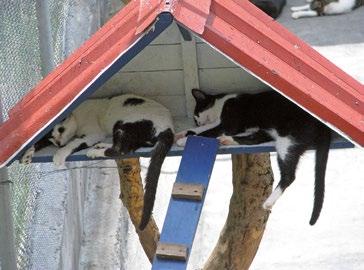
1 minute read
Disorders associated with aggressive behaviour
SERVET CLINICAL GUIDES AETIOLOGY
BEHAVIOURAL DISORDERS
14
PATHOPHYSIOLOGY
When we integrate all the concepts discussed previously, we can conclude that it is hard to delimit the aetiology and pathophysiology of compulsive syndromes because in practice the origin and development of a stereotyped behaviour are inseparable.
When a cat is confronted by a conflict or environmental stress it will try to deal with the situation through a displacement activity whose genetic basis is founded on normal species-specific behaviours, but which could develop into a stereotypy depending on the animal’s life experiences, its environment-induced frustration, the intensity of the stress-inducing stimulus, and its owner’s response.
From a physiological perspective, this conduct is preserved in the specific neuropathological changes due to the alterations in the brain biochemistry of animals exhibiting these behaviours.
Stereotypies are induced by stimulants of the dopamine system (amphetamines, apomorphine), stress due to anxiety, and owner reinforcement of the animal’s conduct.
It is also known that stereotyped behaviours are maintained by endogenous opioids, released in stressful situations, which activate dopaminergic neurons.
In many cases, subclinical temporal lobe epilepsy has been confirmed as the cause of some stereotypies.
In practice, a lack of adequate interaction with other cats and animals or people, mainly during the socialisation period spanning from 3–9 weeks, may predispose the animal to exhibit stereotypies as an adult, even though it lives in a suitable environment.
So, compulsive behaviours in cats can be simultaneously placed in several categories of abnormal behaviour.



